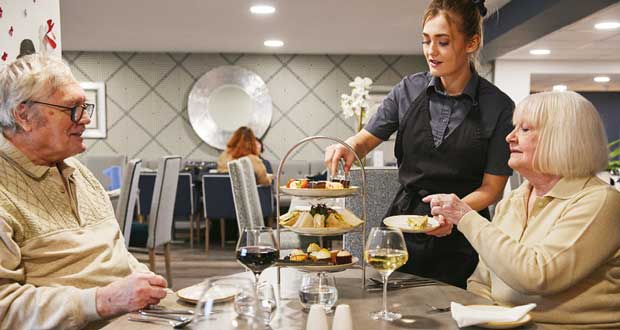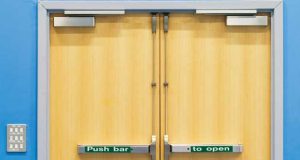 Michal Seal, Managing Director Healthcare at Elior discusses the key learnings from a report about the future of food in care and retirement living
Michal Seal, Managing Director Healthcare at Elior discusses the key learnings from a report about the future of food in care and retirement living
The care sector is currently worth £15.9 billion a year in the UK and Caterplus, the care and retirement living division of Elior, is one of its leading foodservice suppliers. Managing Director Healthcare, Michal Seal explains: “Retirement living is now for the over 55 plus, so that market has grown exponentially in the past five to 10 years.
“We cater to active individuals who could possibly still be working, to providing perhaps the last meal to a frail or elderly person. We’ve a broad range of customers at diverse locations around the country, our customers might be predominantly Asian on some sites, and we’ll run a predominantly Asian menu to cater towards them, but in most locations – British cuisine is still the preferred option.”
To help measure preferences, Caterplus recently carried out a survey of 3,000 people, aged between 45 and 75, who may or may not already be living in care home and retirement living accommodation across the UK. The ‘trends shaping the care and retirement environments of tomorrow report’ found that 95 per cent of care recipients value a personal, human-led approach, with care delivered by people and technology playing a supportive role.
Seal explains: “They appreciate that human touch, particularly at this stage in their lives, but they are very willing to embrace technology in other areas of the service, just not as a replacement for human touch.”
DIGTIAL INNOVATIONS
Technology does help foster a sense of community and engagement. Bellabot is a robot that helps to deliver food trays and clear tables and while it doesn’t drive a huge amount of efficiency, it creates a new approach to resident interaction, even being programmable to sing Happy Birthday to a resident on their birthday.
A powerful way to personalise foodservices and bolster efficiency is by the provision of a digital ordering app that enables residents to choose their meal preferences, increasing variety while helping reduce waste and maintain sustainability.
Social interaction is key part of the Caterplus remit, explains Seal: “Residents also benefit from using Mobi Magic Tables, portable interactive projection systems that can turn any surface into a sensory experience with over 150 interactive activities.
“It’s really engaging and when you see people playing on the magic table, it just shows how it really helps drive their sense of wellbeing and can be quite an emotional experience.”
Technology is also helping to train staff dealing with texture modified food, that is pureed food for residents with dysphagia. This foodstuff requires a complicated process and often needs to be fortified in consultation with a team of dietitians.
“It’s a very specialist way of producing food”, says Seal, “and it’s not something that you could grasp if you’re just doing some online word-based training. We introduced Hololens 2 AR goggles so the team member who’s learning will put the AR goggles on and is talked through the process.
“What’s important is how it’s piped on the plate, so for example, if you’re a resident eating a roast dinner, then you want it to look like a roast dinner. It’s a much more positive way to be fed during a time that’s quite difficult emotionally and physically, and it helps afford the recipients their dignity.”
MEETING CATERING CHALLENGES
Like the rest of the foodservice and hospitality industry, Caterplus is dealing with recruitment and retention challenges and coping with inflation. According to Seal, Caterplus’ staff turnover is much lower than most competitors at around 33 per cent, which is significantly lower than the average of 50 per cent plus within the broader hospitality sector.
Says Seal: “I think this reflects the fact that we are a very inclusive, very authentic business to work for, and we very much listen to and care about our employees.”
She agrees that cost inflation is also a challenge but works very closely with clients to ensure they are mitigating that challenge as far as possible.
“I’ll give you one example of which we’re particularly proud. As flour, sugar and eggs have increased significantly in costs, we’ve added chickpeas to some of our cakes. This adds additional fibre and protein to the cake, enabling us to prioritise taste and nutritional value, while maintaining costs.”
This also helps meets the expectations of 50 per cent of survey respondents who expect sustainable practices, such as reducing food waste, increasing recycling efforts and improving energy efficiency. Seal explains that 90 per cent of products are bought from suppliers within 40 kilometres of the site, and all egg, milk and cream is from the UK.





